In this tutorial, we will guide you through an overview of MuleSoft’s Anypoint Flex Gateway. Please note that this is not a technical tutorial. This is intended as an introduction to the product. We will cover:
- An overview of how Flex Gateway works
- An example to configure it in connected mode
- An overview to apply policies in API Manager
Anypoint Flex Gateway overview
Anypoint Flex Gateway is MuleSoft’s new ultra-fast gateway designed to manage and secure APIs running anywhere. The gateway is built to deliver the performance required for the most demanding applications while providing enterprise-grade security and management.
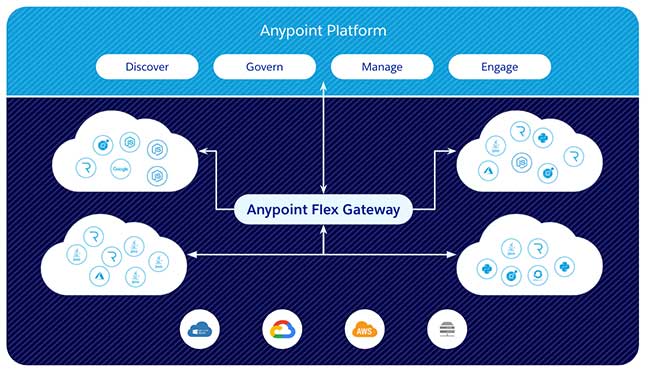
You can configure the gateway in one of two ways: connected mode by using the Anypoint Platform web user interface, or you can configure the gateway locally to manage APIs in private environments.
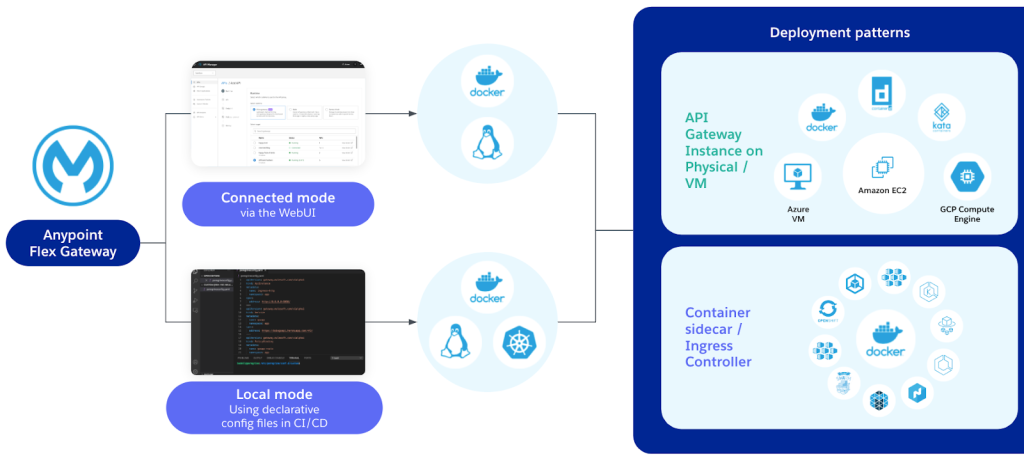
Configure Anypoint Flex Gateway in Connected Mode
We will take a look at configuring Flex Gateway using the connected mode. You can deploy and run Flex Gateway as a Linux service, a Docker container, or as a Kubernetes ingress controller. All setup commands for deploying Flex Gateway are available in Runtime Manager. To install, simply copy and paste the commands into your terminal to quickly register, deploy, and start Flex Gateway.
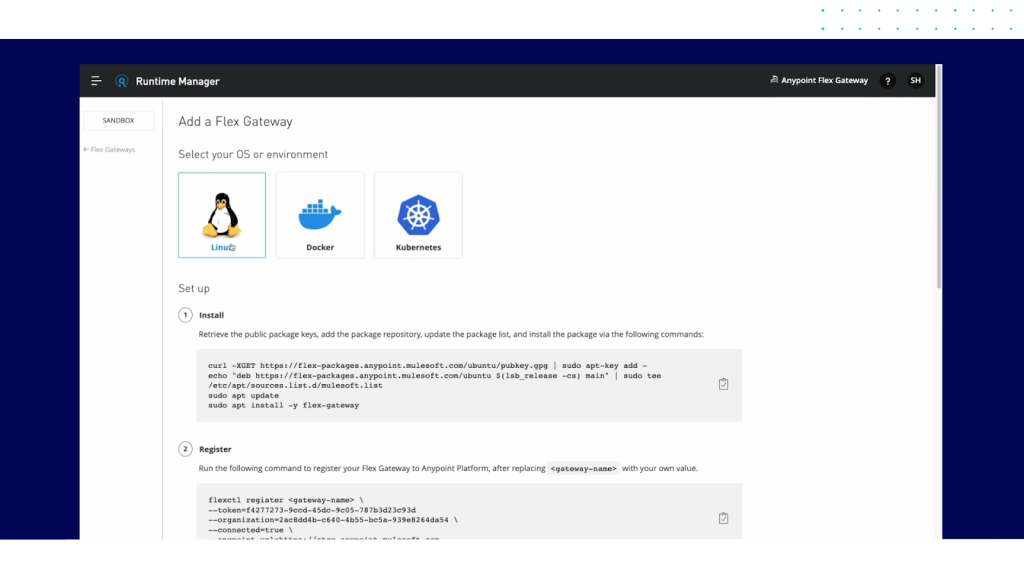
Once registered and configured, you can see the gateway listed as connected in Runtime Manager. Then, you can go to API Manager to manage and secure any API.
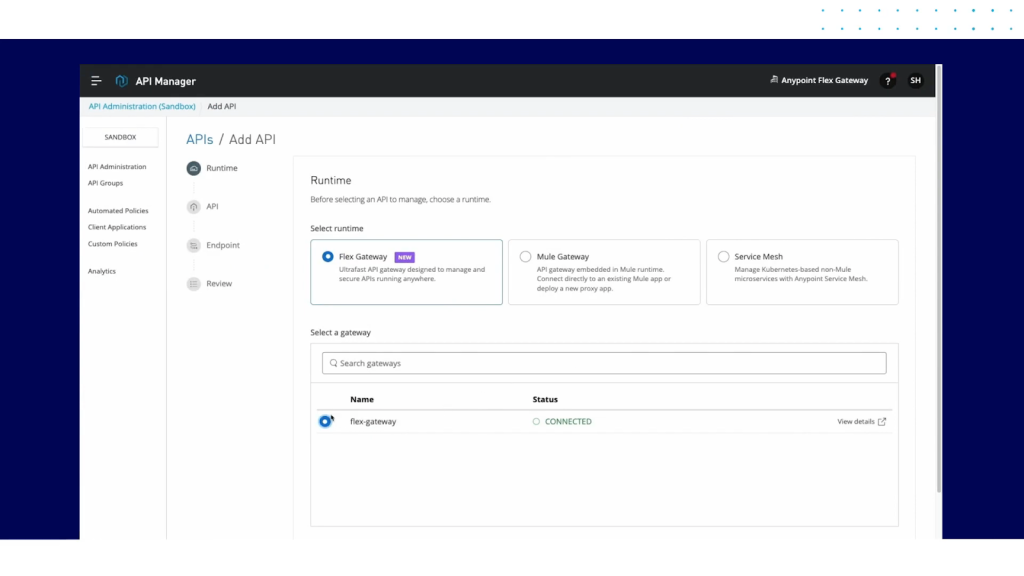
To add a new API to Flex Gateway from API Manager, you can either choose to import from Exchange or create a new API.
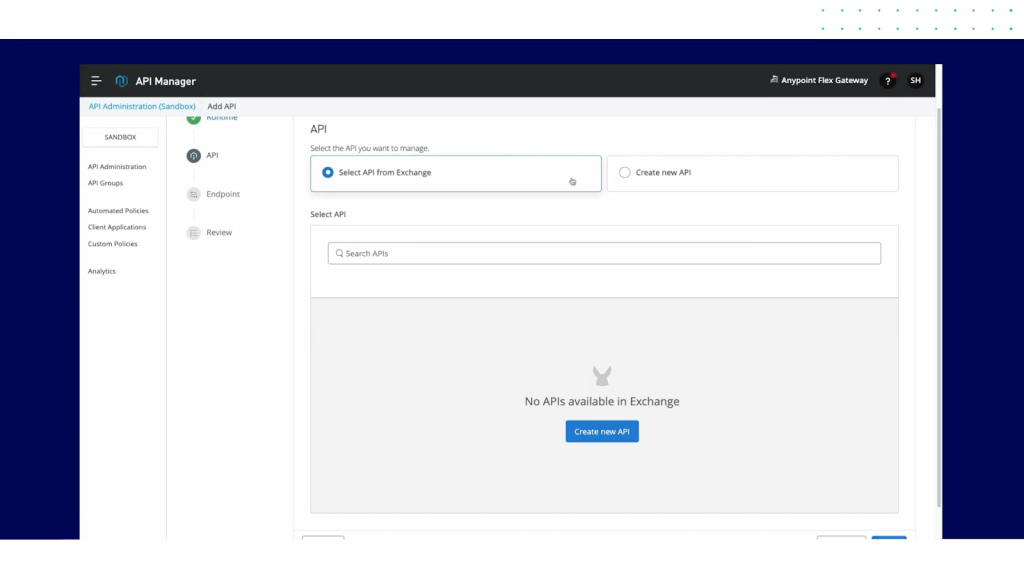
Once you upload the specification, API Manager detects the backend implementation URL and lets you make any changes to your gateway configuration.
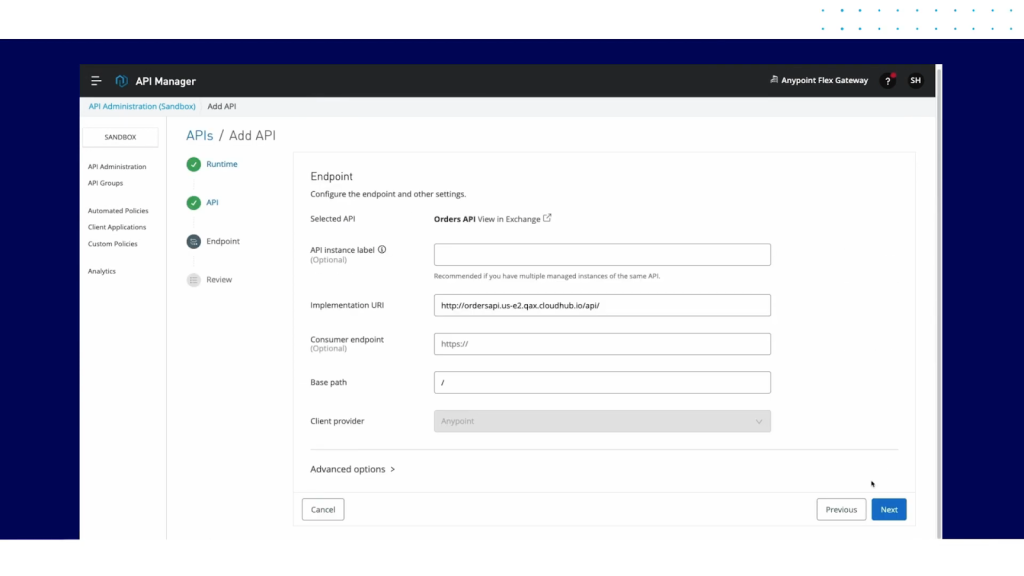
After you review the configuration, simply deploy it to the gateway.
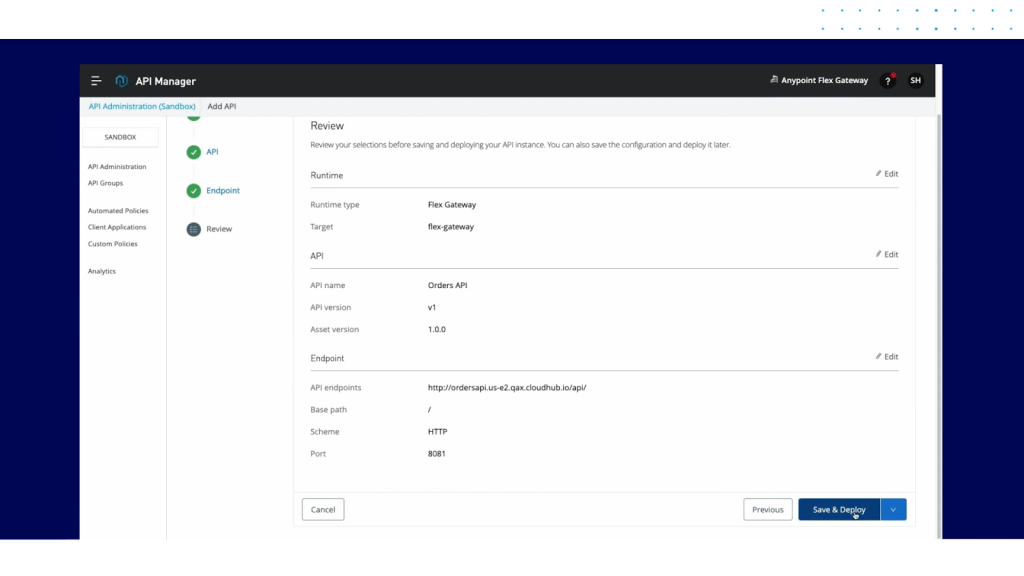
All the traffic to the backend is now routed through Flex Gateway. You’ll get detailed analytics and telemetry data for each API deployed.
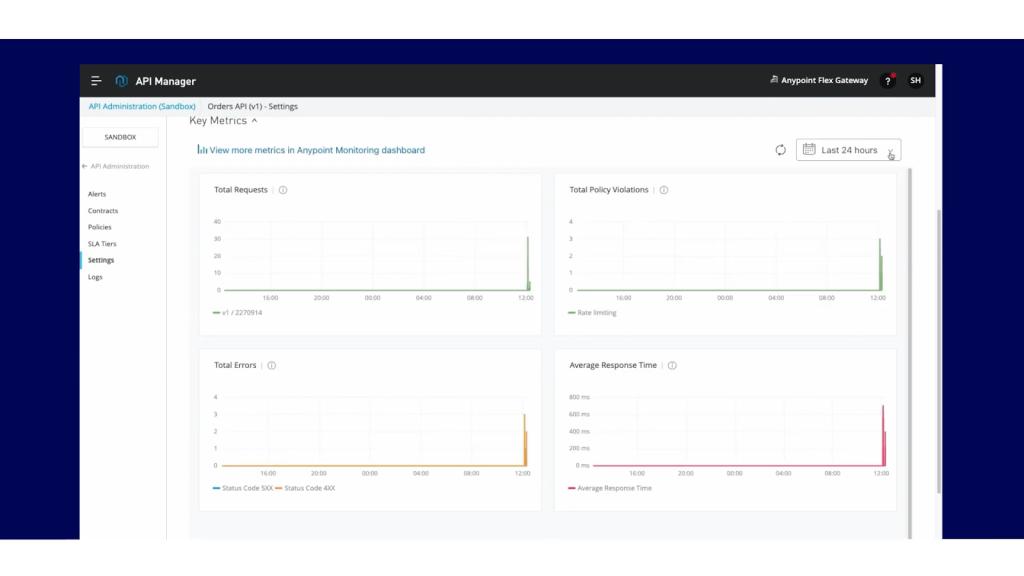
Apply policies in API Manager
It’s easy to apply policies through API Manager. There are several out-of-the-box policies for compliance, quality of service, security, and troubleshooting that are commonly used with APIs.
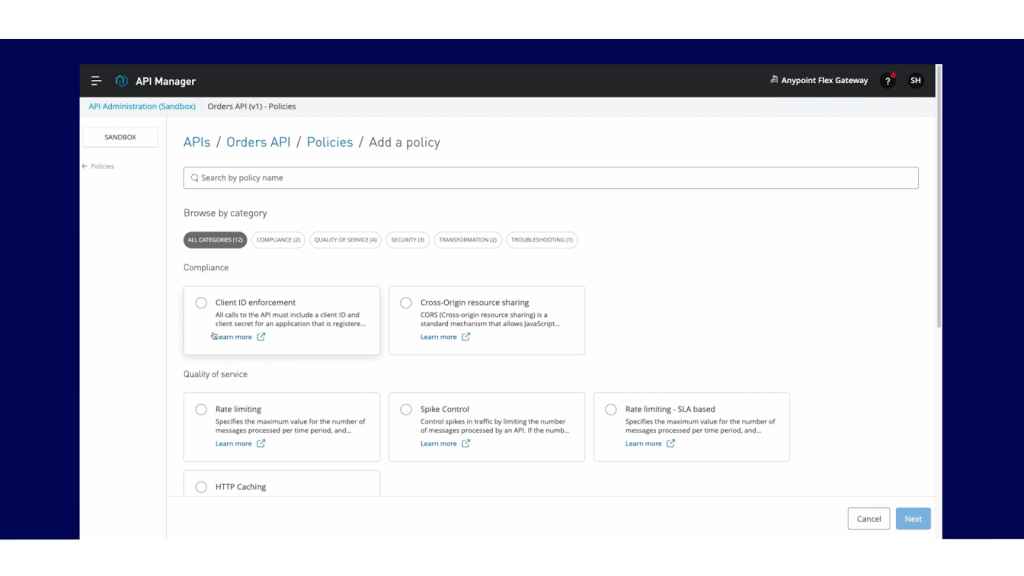
Let’s apply a Rate Limiting policy.
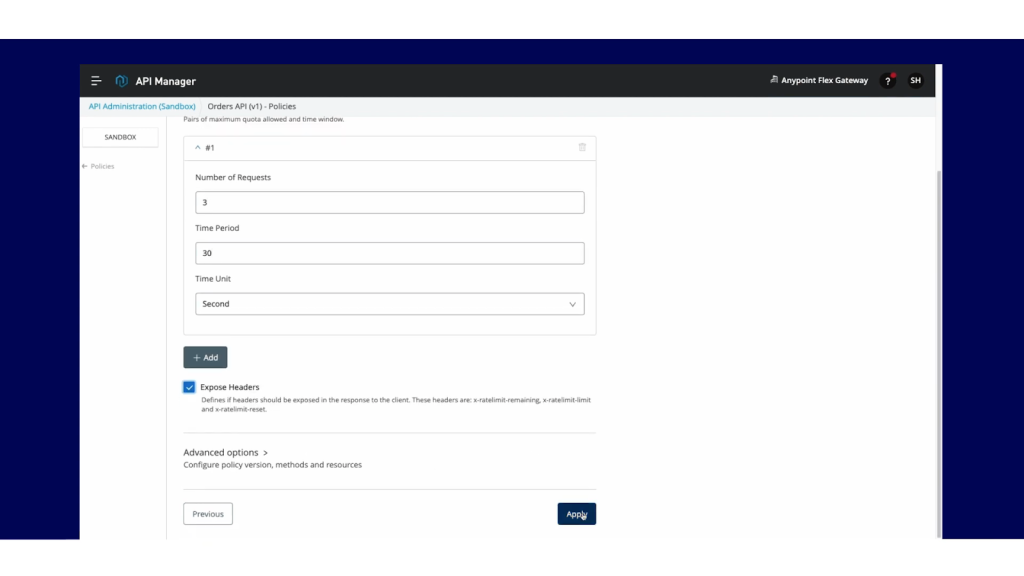
Once added, Flex Gateway instantly applies the policy to the API with zero downtime or interruptions. As we make calls to the API, the rate-limiting message is returned after a couple of requests.
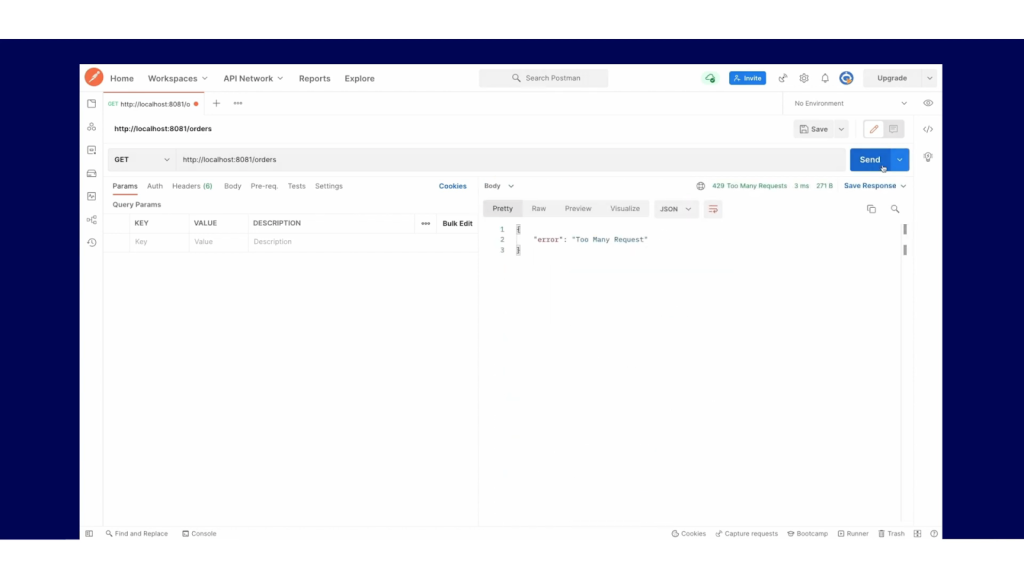
Anypoint Flex Gateway can be deployed to manage APIs regardless of architectural patterns or type of environment. It truly is flexible for all use cases or architectures, inspiring our name: Anypoint Flex Gateway.
Next Steps
In this tutorial, we saw an overview of Anypoint Flex Gateway. We learned:
- An overview of how Flex Gateway works
- An example to configure it in connected mode
- An overview to apply policies in API Manager
Stay tuned for the technical developer tutorials we will be releasing over the next few weeks. In the following tutorials, we will guide you through the detailed instructions to:
- Install Flex Gateway in Connected Mode as a Docker Container
- Install Flex Gateway in Connected Mode as a Linux Service
- Install Flex Gateway Locally as a Kubernetes Ingress Controller
- Install Flex Gateway Locally as a Docker Container
- Install Flex Gateway Locally as a Linux Service
- Manage APIs from API Manager (Connected Mode)
- Manage APIs with the Configuration File (Locally)





